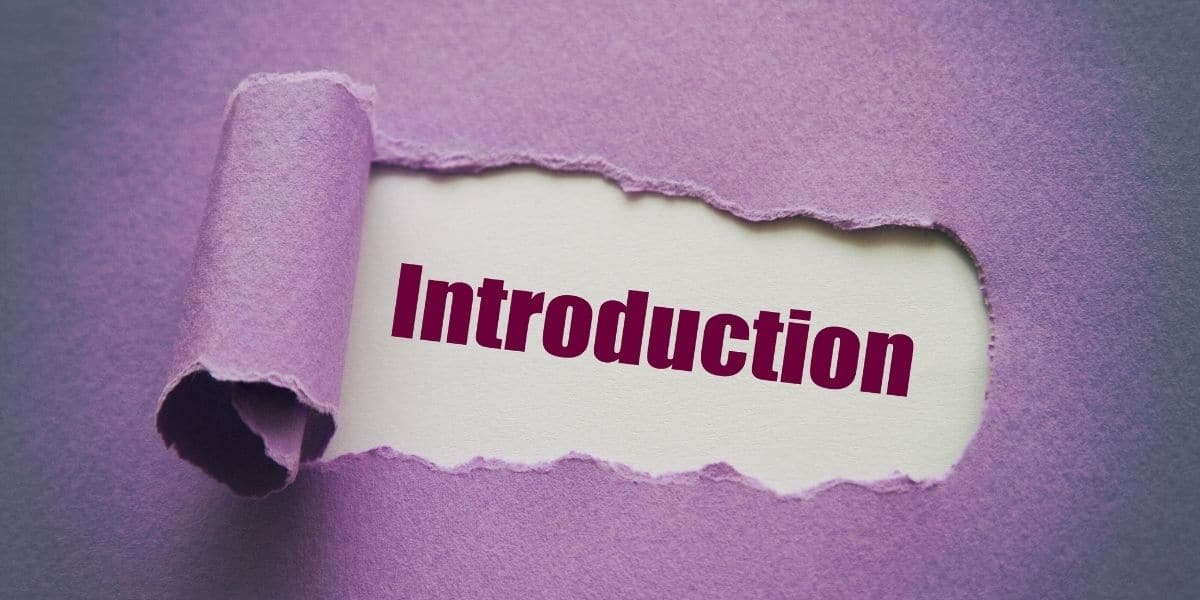How to Write Professional Startup Introduction Letters
If you are a startup founder, someone has probably asked you to a startup introduction letter many times. If not, then it is only a matter of time before someone asks you to write a letter introducing your business.
Introductions are the first step towards establishing relationships with potential partners, vendors, customers, and employees. These letters should be short, clear, and direct. They should also impart all the relevant information about your company in an interesting way that makes people want to learn more about it.
With that understanding in mind, now it’s time to build your introduction letter.
Mục Lục
What Makes a Good Introduction Letter?
The first step in writing an effective introduction letter for your startup is to decide on a specific purpose. The purpose of an introduction letter should be to introduce your business, product, or service to someone who may want to do business with your company.
Alternately, you may be asked to introduce two people who you’ve done business with, but who have never been in contact with each other. In either case, the below rules are the same.

First and foremost, you must know who your audience is and what they want. If they want to know more about you and what you do, then include information about your team members and how long you have been in business. If they want proof that you can solve their problem, then provide testimonials from previous clients or even show statistics about how many people have benefited from using your product or service. If it’s an introduction, remind the new party about how you met, or goals that you’ve accomplished together.
Always use a clear and direct subject line. For many recipients, this is a make or break moment. You have one shot to intrigue them enough to keep them reading.
Mention how you got the recipient’s mailing or email address in the first paragraph so that they see the connection clearly. This helps to break the ice and can turn an unexpected message into a warm conversation.
Keep your message short and to the point. Never include information if you are unsure of its relevance. The best way to do this is by using targeted language that addresses their specific needs. For example, if your company sells software solutions for small businesses, then talk about how they can improve productivity while saving money on hardware upgrades or repairs by using your software instead of other solutions available on the market.
If possible, try including some evidence of previous successes and how they relate to the reader’s situation (e.g., “We’ve helped many other companies like yours with [insert problem]”). This will help prove that you know what you’re talking about and are confident in your ability to provide solutions (even if it’s just in theory at this point).
The Recipe for a Startup Introduction Letter
If you’ve written professional letters in the past, you probably already know these building blocks. That said, it can be easy to forget critical pieces, and we can all use a good reminder now and then.
Like most professional letters, the top portion should contain:
- Today’s date
- The recipient’s name
- The recipient’s address, if known
- City, state, and ZIP code, if known
These parts are all set in stone. But once you have them, you are free to add a bit of personal flavor to the rest.
Your next step is to work out a sentence that explains your reason for writing. It could be straightforward (“Introduction to eCats”), or something with a bit more panache (“The solution you need for cat-sitting woes”). But remember, this is your eye-catcher. You want this sentence to make an impact.
With those elements in place, it’s time to start with an opening that’s clear and direct, such as “Dear Ms. Smith.”
From here, we follow the best practices, some of which we have laid out before:
- Mention how you got their contact information
- State the reason why you are writing
- Introduce your team and their qualifications
- Restate the proposal
- Give your contact information
- A call to action
- A closing thanking the recipient for their time time
- Your name, job title, and company name
Writing the Introduction Letter Body
We’ve covered the structure, and we’ve talked about the elements at a high level. Now let’s spend a minute digging into the body itself.
Keep it short and sweet. Your introduction letter should be no more than two to three paragraphs long — one paragraph for each piece of information about your business. Use bullet points for lists of features or benefits, and keep sentences short, clear, and direct.
The first paragraph should be the most important part of your letter because the recipient will read it first. You can use this paragraph to highlight your accomplishments or qualifications for the job, if appropriate. But more importantly, this is where you’ll want to introduce yourself, your business, and the areas that you serve.

Your next paragraph is your reason for writing the letter — that is, why do you want to meet with Ms. Smith? This can be as simple as “I’d like to meet with you about working together on this project.” If there are multiple reasons for contacting them, list them here in order of importance. For example: “I’d like to meet with you about working together on this project, which will benefit both our companies by increasing sales revenue by 50 percent within the next two months.”
Close your letter with a strong, but natural, call to action. Make sure that at the end of your letter there is an invitation for further communication or a request for something specific — like help with funding, advice on legal matters or technical support with setting up an online store. The more concrete your request is, the more likely it will be fulfilled by the recipient
Saving Time with Introduction Letters
As we talked about at the start of this post, introduction letters are a fact of life in business. You can expect to send a lot of them. Putting TextExpander to use can make your work faster, help you avoid typos, and keep the language consistent from one letter to the next.
Look for elements that you can shorten into Snippets. For example, you can choose to load a few different sign off versions, saving you the time required to manually type them. You can also add Snippets for your business description, your executive team, and the recurring parts of your message. For more in-depth segments, consider Fill Ins to give you some more flexibility.
Introduction Letter Templates
Now that we’ve gone through all the parts to your letter, we want to send you off with some actionable templates. We hope you can use these as a starting point for your own letters, so please save and share them.
Example 1:
February 31st, 2022
Jane Doe
123 Aye Street
Chicago, IL 60073
Putting an end to your cat-sitting woes
Dear Ms. Doe,
Thank you for taking the time to read this letter. Our mutual friend John Doe provided me with your contact information. I am writing to introduce my company, eCats. We are a technology company, helping cat owners find peace of mind when traveling. Since we are an online business, we have found customers around the globe.
eCats Solutions has been in business since 1946. In that time, we have assembled an incredible C-suite team. Knowing that you are an online provider of litter boxes, we believe we can find a mutually beneficial relationship.
I have attached a detailed company brochure for more information about our services, products, and prices. At your convenience, we would like to meet with you to discuss an offer.
We look forward to hearing from you.
Sincerely,
F. Eline Katz
Founder
eCats
Example 2:
February 31st, 2022
Jane Doe
123 Aye Street
Chicago, IL 60073
Introduction to eCats
Dear Ms. Doe,
I was given your contact information by D. Ogg, CEO of ePups. As the CEO of eCats, I am writing to introduce our company to you. We are a technology company that helps end travel-induced anxiety for pet owners. We are an online company, established in 1946, serving customers around the world.
eCats is owned and run by me, with the help of our Chief Operations Officer M. Eow, Esq. We are dedicated to helping cats have a better life while their owners travel. As a business, we hope to become a household name in pet lifestyle services.
I’m attaching a brochure that explains our mission. We look forward to having you join us as a distributor of on-demand cat boxes. If you have questions, please contact me at this email address, or by phone at 555-123-4567.
Thank you for your time,
F. Eline Katz
Founder
eCats
Writing a startup introduction letter doesn’t have to be hard work. But the details are important. We’re eager to hear your take, and what has worked (or not worked!) for you in the past. Sound off in the comments.















![Toni Kroos là ai? [ sự thật về tiểu sử đầy đủ Toni Kroos ]](https://evbn.org/wp-content/uploads/New-Project-6635-1671934592.jpg)


